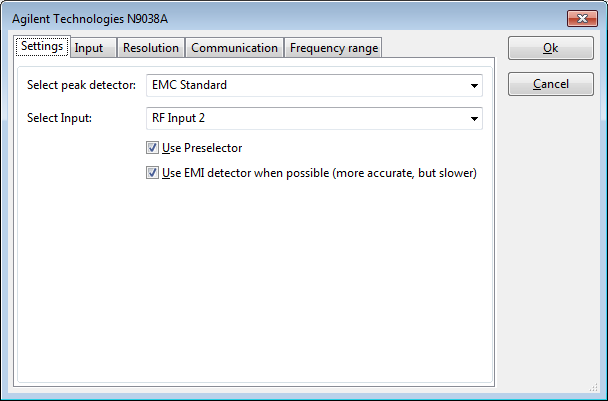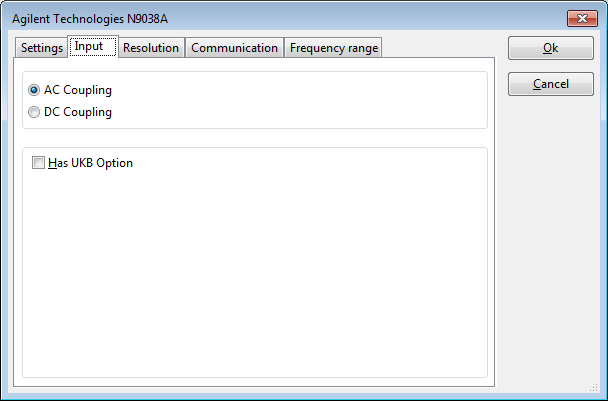
|
| Warning:
|
At least firmware version A.12.09 should be installed on the Keysight Technologies N9038A General, otherwise the preamplifier cannot be controlled correctly in EMI receiver mode.
|
|
Alignment
The Keysight Technologies N9000-series Spectrum Analysers have to be aligned, to ensure the performance and accuracy of the N9000-series. Changes in ambient temperature, internal temperature and time intervals can trigger that a new alignment is required. When the N9000-series analyser thus indicates that it should be aligned, it is better for the performance and accuracy to perform that alignment. That is why our RadiMation® device driver for the N9000-series detects this situation and the informs the end-user that an alignment should be performed.
The alignment process can take some time, and there are several types of alignments possible. We therefor advise to the end-user that the alignment is performed manually. The alignment is thus NOT started automatically from our RadiMation® device driver. The RadiMation® device driver for the N9000-series analyser is checking if the analyser is correctly aligned before it is used during a measurement. If an alignment is needed the error 'Device is not aligned. Please align device and restart the measurement' is raised. An alignment should be performed manually before it can be used during a measurement. Once the alignment has been performed manually, the measurement can be started in RadiMation® again.
The N9000-series analysers have an option to perform the alignment automatically when it detects that an alignment is needed. It is however undesired to perform the alignment during the actual test, as this cause a period of time that no measurements can be performed, and it causes differences in the amplitude measurement within the same test, before and after the alignment.
To prevent that the alignment happens automatically during the actual emission test, the RadiMation® device driver for the N9000-series analyser uses the following steps:
- A check is done to determine if an alignment is needed on the instrument. If this is the case, the error 'Device is not aligned. Please align device and restart the measurement' is raised.
- The auto alignment is disabled
- The actual emission measurement is performed
- At the end of the measurement when the used equipment is being deinitialised, the automatic alignment is activated again.
'Advanced' configuration
The 'Advanced' configuration dialog of the Keysight Technologies N9038A General device driver has several tabs to configure the device driver.
Settings

 Select peak detector Select peak detector
|
Specifies the standard that should be used for the peak detector. Possible standards are: 'EMC Standard' or 'MIL Standard'.
|
 Select input Select input
|
Specifies the input that should be used. Depending the exact model used, it is possible that the selection of the input is disabled.
|
 Use preselector Use preselector
|
If the preselector should be enabled or not.
|
 Use EMI detector when possible (more accurate, but slower) Use EMI detector when possible (more accurate, but slower)
|
Specifies if the EMI average or non-EMI average detector should be used. The EMI average detector is more accurate, but also slower than the non-EMI average detector. Depending on the available options in the measurement device it is possible to select the EMI average detector. When this option is activated and the EMI average detector is available, the EMI average detector will be selected. Otherwise the non-EMI average detector will be selected.
|
Input

 AC Coupling AC Coupling
|
Specifies that AC coupling of the input should be selected.
|
 DC Coupling DC Coupling
|
Specifies that DC coupling of the input should be selected.
|
 Has UKB Option Has UKB Option
|
Specifies if the UKB option is present in the device, which will allow to perform measurements on a lower frequency range.
|

